Resources
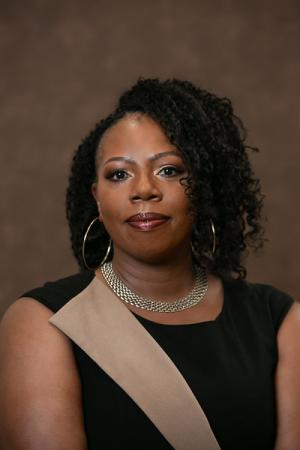
This semester I taught the Gospel of Luke for the first time. My class was a seminar style class with seven students who worked diligently through the Lucan text while also engaging various scholars and they ways that these scholars used a variety of methods for interpretation. Since most of my published works are in the Gospels of Mark and John, teaching the Gospel of Luke was a new experience for me. During the course of this class, my students dubbed me as their most “confessional” professor. At first, I disliked the term because, in my mind, I was still seeking to embody the detached state in my teaching approach which would have been very similar to many of the professors with whom I studied New Testament texts. However, I had to ask myself why I was seeking to be detached within this particular pedagogical space. Upon reflection, I realized that the makeup of the class was one reason I wanted to appear detached. In my Gospel of Luke class, I had a variety of students ranging from budding womanist and feminist students to strictly complementarian male church leaders. As an African American woman professor, I have found in my years of teaching that strictly complementarian male church leaders often avoid my classes just because of my embodied presence. Because I knew that some of our conversations could become tense, I wanted to remain a detached presence even though my embodied presence oftentimes cannot afford to be detached. My particular embodied presence makes a difference in the ways that students receive information. Realizing this, I embraced the idea of being confessional—with some caveats. Most scholars understand confessional approaches to religious education as not valuing differing interpretations of understandings of scripture and theological concepts.[1] Confessional scholars often believe that different opinions cannot be valued and accommodated within confessional spaces. I would offer something slightly difference and nuanced. Turning to the work of Patricia Hill Collins, I argue that even though I am an ordained minister and seminary professor, my “confessions” are not rooted in the above-referenced (and outdated) understandings of confession but are confessional with a hint of testimonial authority. Collins argues that academia is influenced by various forms of critical analysis. Citing critical race theory, Collins discusses that said theory was advanced by legal scholars, practitioners, and activists while drawing upon dual theoretical traditions: specifically, structural analysis within the social sciences as well as narrative traditions within the humanities.[2] Collins further explains that the narrative traditions stem from the testimonial authority of storytelling. The recipients of the worst practices within the legal system told their stories as a way to bring about change to the system. As I reflect on what I am calling “Womanist Confession as a Form of Embodied Teaching,” I realize that even as I explain the various theories and methods of biblical interpretation, most of my examples and discussion prompts stem from my own life and being as a Womanist New Testament scholar. Similar to Collins’ understanding of the testimonial authority of storytelling, I often reiterate stories of the worst practices of biblical interpretation that continue to gaslight within traditional confessional spaces. By doing this, Scholars can bring about change in the academic study of the Bible. For example, when studying Mary’s Magnificat in Luke 2, I prompted the class to think about questions of consent, knowing that my own experiences of sexual assault lie in the background of my questions. While I may not explicitly tell stories about such experiences, I do allude to and testify about different experiences in my life and how male pastors have gaslit me into believing that the sexual assault was not as bad as it was.[3] Statistics also help in explaining the importance of asking these questions. According to the CDC, one in four women experience a rape or attempted rape in their lifetime.[4] There were five women in my class so that means that two of us has had such an experience. How does the conversation of Mary’s “consent” play out when we ask these questions while reading the biblical text? Oftentimes, male students do not think that such questions belong in the conversation but, as I argue to them, preachers may miss more than half of their congregation if they ignore such questions. As pedagogues, we are not objective, dispassionate, and detached presences in our classrooms. I hope that each and every one of us continues to interrogate our own identities and our own stories as we enter the classroom space. [1] L. Philip Barnes, Education, Religion and Diversity: Developing a New Model of Religious Education (New York, NY: Taylor & Francis Group, 2014). [2] Patricia Hill Collins, Intersectionality as Critical Social Theory (Durham, NC: Duke University Press) 90. [3] See https://www.christianitytoday.com/news/2019/june/sbc-caring-well-abuse-advisory-group-report.html. [4] See https://www.cdc.gov/violenceprevention/sexualviolence/fastfact.html.
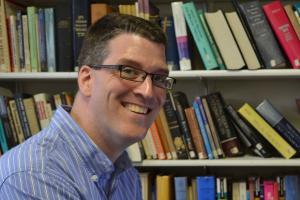
You know who has a lot of spare time lately? Nobody. You know something that wastes time when you’re a student? Finding yourself in a class that is definitely not a class you want, because no one gave you a heads-up about Dr. Lester. Someone should give them that heads-up, and it should be me. How better to do so than by telling them all of my dearest hopes and dreams... before they sign on the enrollment line. Just because a student wants to take Introduction to the Hebrew Bible, it doesn’t mean they want to take it from me. Better to figure that out before week one, rather than week five or six... agreed? I listen to our admissions director and to our dean of students, and the word I hear over and over is “precarity.” The lives of our students are more precarious than ever. (Yes, so are yours and mine, but let’s keep our focus on the students.) On the first day of the term, a student likely comes into my class with no wiggle room in their life. If my approach is not what they’re after, then this relationship is costing them money and more than that, it’s wasting their time. See, I don’t just have a lot of knowledge about the Hebrew Bible and its study; I also have all these ideas about them. And not just ideas—I have feelings, and passions, and convictions, and reckonings. Many of these are commensurable with those of other instructors at my institution and its partners in cross-registration, but they are not identical. Professor So-and-So and I may agree broadly about the subject matter and its study; we may devour each other’s research about it and may laugh at each other’s jokes about it; we’re sympatico... and a student might find heaven in their course and hell in mine. To put it in terms of course design, I have “big ideas” that animate my course and its units. (For what follows, see Grant Wiggins and Jay McTighe, Understanding by Design, Pearson, 2006.) These big ideas are one major source for the understanding, knowledge, and skills that I hope learners will develop in their engagement with the Hebrew Bible. Wiggins and McTighe describe a big idea as a linchpin, and as “conceptual Velcro”: a big idea unifies several pieces of “related content knowledge” in a way that is core to understanding the subject at hand. For example, here are some of the big ideas that animate the units in my Introduction to the Hebrew Bible: Cross-Culture: reading the Bible is always a cross-cultural experience. Competing Claims: biblical texts will disagree with one another about God, God’s ways with the world, and what God wants. Not You: biblical texts are not talking to you—they speak to their own time and place, in order to make specific things happen in their circumstances. History is Storytelling: histories, like any stories, use strategies for reasons: characterization, plot, point-of-view, omission, misdirection, rhetoric of every kind. The Story is not the History: the “world behind the text” is not the “world in the text.” In Understanding by Design terms, these big ideas correspond to “essential questions” that do not call for a single knowable answer, but rather prompt further questions and open-ended inquiry: Can competing claims about God both be true? What makes a claim true? What does it mean for a text to “speak to” a hearer whom the text never imagined? To what is a history accountable? What makes a cross-cultural experience “authentic”? You start to get an idea, don’t you? These overlapping big ideas and essential questions motivate the course design... and, not incidentally, tell you a lot about me and what it might be like to spend thirteen weeks doing my assignments and adapting to my feedback. If this isn’t what a learner expects of an Introduction to the Hebrew Bible, they can ask themselves some questions. Are they surprised and delighted? Are they cautiously curious but wonder what other offerings of this course might look like (at my institution or elsewhere)? Are they repulsed or offended? Would they like to chat? However this goes, we are well on our way toward a week one roster of forewarned, well-informed, consenting participants. But only if this information is available in a timely way, and that means the day that registration opens. Any lesser commitment means a waste of time for prospective learners who don’t have it in the bank.
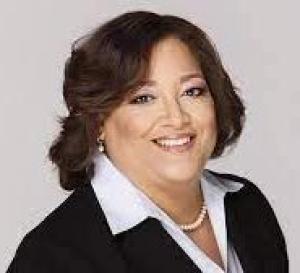
Democracy is the principle of governance marked by every person’s fair and equal treatment. In democratic societies, everyone has the same unfettered access to public goods and shares fairly in public life. Trust undergirds and upholds systems of democracy and these systems disintegrate when the people no longer trust. Importantly, this dependent relationship between democracy and trust exists in the public square and in the seminary classroom. Before I reflect upon democracy and trust in the classroom, I must share a bit about myself. I come to the work of religious and theological education from a career in corporate marketing. My understanding of the teaching and learning experience stems from my years in consumer brand management, during which I developed “muscle memory” in identifying a need, determining how my product uniquely meets that need, and presenting my product in ways that encourage a particular action (usually a purchase). During my time at corporations like the Ford Motor Company, Nabisco, the Fort Howard Paper Company, and The Coca-Cola Company, I was rewarded for my ability to assess my product’s performance knowing market conditions change. As it was with automobiles, cookies, facial tissue, and carbonated beverages, so it is with religious education. As a seminary professor with an eye towards democracy in the classroom, I recognize that classroom environments have shifted in ways that make trust an even more critical part of my pedagogical offerings. Trust must undergird democracy in my classrooms. In what follows, I share my thoughts on some of the actions I take to help build democracy through trust in my classrooms. Trust in the Virtual Classroom This year my fall semester students operated with a heightened sense of anxiety; more of them fixated on the smallest details of the syllabus and their performance. At first, I thought this was a life-stage function as we had many students who matriculated directly from their undergraduate experience. Upon further reflection, I determined that life stage was not the primary driver of this anxious student behavior. This group of students began their seminary journey with no in-person learning; they were 100% online. The lack of in-person interactions brought on by COVID-19 safety protocols (let alone being unable to see or encounter professors or each other outside of the classroom) contributed to students’ anxiety and distrust. I am a Biblical studies professor, currently teaching introductory courses and specialized electives. Students in my introductory class—which is required for the MDiv degree—began online instead of in person. Many of these students applied and were accepted to seminary before the COVID-19 pandemic and had no intention of attending seminary online. My fall 2020 students were all new to the seminary, and I was one of their first seminary professors. Most were new to online learning and they were different when it came to trust in my course. Their levels of trust were lower, and their levels of anxiety were higher than my former students’, who met in-person in traditional formats. Over the Christmas break, I was intentional about modifying my syllabus and reassessing some of my pedagogical practices to account for issues of student trust and anxiety. Consistency is critical when creating trust, allaying anxiety, and nurturing democracy in the classroom. Small details are essential in matters of classroom trust; therefore, I was careful to make sure the templates I used for lecture-discussion looked alike. While it is easier to repurpose material from other presentations, I converted presentation slides, so they matched visually. The title slide from my early “Ancient Near Eastern Context of the Hebrew Bible” presentation looks exactly like the title slide for my latter “Wisdom Literature” presentation. Something is comforting about seeing patterns. I imagined my students thinking, “I recognize this. Dr. Russaw has projected a slide that resonates with last week’s information presentation. This experience is not something new I have to manage in my day. I can relax and learn.” Secondly, I structured class sessions in the same way each week. Each session began with a centering moment and ended with “good words” of encouragement. My teaching assistant took responsibility for each week’s centering moment, and arranging for volunteers for the closing words. These consistent rituals did a couple of things. Students knew the centering moment signaled the official start of class. It was not uncommon to hear deep sighs at the end of the centering moment. It was as if students were saying, “Okay. I am in a (virtual) space where I feel comfortable. I can relax a bit and lean into the next couple of hours of learning.” Giving students a way to participate through volunteering to offer closing words helped build democracy because all students had an equal opportunity to participate, or not. We all, professors and students, live in a time of great uncertainty, and that uncertainty makes for anxiousness and distrust in the classroom. I hope that by attending to small actions we can take in our classrooms, our students will learn to trust and will be able to flourish in their learning.
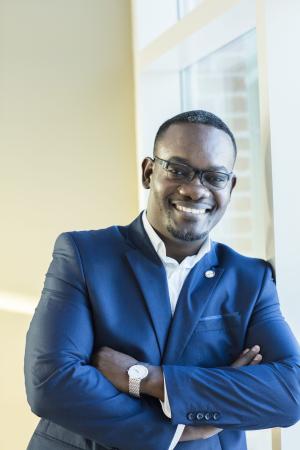
Character formation plays a crucial role in enabling students to engage effectively in endeavors related to social justice and civic engagement. I have wrestled for a long time with how best to help students respond to societal challenges such as inequity, prejudice, and discrimination that they face or observe. As an ordained clergy of the Wesleyan Church, I fully embrace my denomination’s rich tradition of social justice. In addition, I seek to live out the belief that humanity can experience deep spiritual transformation that leads one to embody Christlikeness. I integrated these concepts in my teaching very early on in my career. However, I became even more acutely aware of the centrality of character formation to my teaching when I joined the faculty at Indiana Wesleyan University. The University’s mission statement reads, “Indiana Wesleyan University is a Christ-centered academic community committed to changing the world by developing students in character, scholarship, and leadership.” Every semester, I would teach one or two sections of the BIL102—New Testament Survey course as part of the General Education core. One of the purposes of the GenEd core is to help students begin to embrace Indiana Wesleyan’s World Changing mission. In the course in question, I design the learning in alignment with the purpose “to develop and articulate a Christian way of life and learning that enables virtue, servant leadership, and citizenship in God’s Kingdom.” Since every student has to take BIL102, I relish the opportunity to have students from different backgrounds engage the biblical text. During the class, I am intentional about challenging students not only to engage the text but also to encounter the person about whom the text speaks: namely Jesus. In our reading of the Gospel of Mark, I focus particularly on Jesus’s encounters with the marginalized. I use narrative techniques to help students place themselves in the shoes of different characters, and challenge them to wrestle with the implications of reading the text from different vantage points. More particularly, I ask them to name an aspect of Jesus’s identity and character that they can emulate. I remember the day a student described Jesus as “sassy.” I was shocked! I am not a native English speaker. The definition of “sassy” that I learned—rude, impertinent—did not match what I knew of Jesus, nor what I hoped my students would want to emulate. Thankfully, I managed to not voice my initial reaction, “How did you get that from the text?!”, but instead replied, “Tell me more!” The student went on to describe Jesus’s direct and, in her words, “no-nonsense” posture toward people. The student used Jesus’ interaction with the Syrophoenician woman in Mark 7 as a case in point. I conceded to the student that Jesus’s words seemed harsh, and I allowed the class to enter and dwell in the awkwardness and difficulties of the narrative. In the end, I was successful in encouraging the student to think of a different way of describing Jesus. My success was short lived. As we journeyed through the Gospel of John, the student became even more convinced of Jesus’s sassiness. I realized that it was necessary for me to pause and grasp the way the student understood the word, and what they were seeing in Jesus’s interactions with people. It dawned on me that Sassy Jesus was appealing because of the balance of truth telling and deep compassion that he displayed. While I struggled initially with the concept, Sassy Jesus eventually became part of the New Testament Survey experience. As I helped students prepare for a lifelong commitment to service and engagement as world changers, the idea of being bold and courageous in telling the truth while showing deep love and compassion began to take root. They found Sassy Jesus to be a relatable person. They found it less difficult to emulate and embody the requisite balance to speak the truth in love. To participate effectively in endeavors surrounding social justice and civic engagement, students need to be resilient and compassionate. It has become more and more difficulty to maintain this balance in public and private life. On the one hand, people hesitate to challenge or call out another person for fear of being viewed as intolerant. On the other hand, there is a tendency to confuse love and compassion with conformity and/or compromise. Jesus mastered the art of welcoming and going to people with whom he disagreed, people who were outcasts, and even people who thought they had everything figured out. He knew how to show them unconditional love and how to challenge them to embrace a better way of life, the way of the Kingdom. One of the greatest challenges we face as educators is to help re-create environments where students not only learn the skills but also develop the character necessary to engage in irenic conversation about difficult issues. We need to design learning opportunities that produce growth and maturity that lead to boldness. We need to construct experiential learning opportunities that build empathy in our students. This will enable them to stand against injustice, prejudice, and discrimination. It will empower them challenge others with the boldness and compassion that come from emulating and embodying the character of Sassy Jesus.
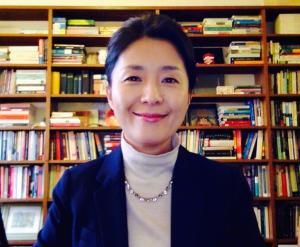
New learning that counters established or accepted knowledge is challenging. My “Global Read of the Bible” course introduces students to different interpretations by Christians from around the globe. Many global Bible readers are critical of the relationship between western colonialisms and the role of the Bible as a tool of oppression. In my first-year teaching, a very thoughtful and engaged white female student reacted emotionally, strongly dissociating herself and her ancestors from western colonialism. In another class, when I discussed how some biblical texts had silenced women, a black male student asked how a woman professor can teach and have authority over men at a seminary! If education is to be formational and transformational, how can we deal with difficult topics related to the privilege and oppression internalized in the teacher and students? This big question is even more complicated when we consider intersectionality and the complexity of identities, but “unlearning” may open the way to approaching this question. The word “unlearn” means discarding or nullifying what we have learned when it is wrong, false, or outdated; to “forget your usual way of doing something so that you can learn a new and sometimes better way.” Yet often, we cannot conveniently remove what we know. What we learn through oppression is inscribed in our bodies. Defining feminist work as memory work, Sara Ahmed argues: Experiences … seem to accumulate over time, gathering like things in a bag, but the bag is your body, so that you feel like you are carrying more and more weight. The past becomes heavy….” (Sara Ahmed, Living a Feminist Life, 23) Previously experienced or continued oppression may lead to suppressing the feeling of shame. You learn to be un- or less affected, or try to forget what should not have happened. So, the definition of “unlearn” is half right when it applies to oppression. Students, as well as the teacher, come to class as embodied beings. Some have unforgettable memories of violence and ineradicable experiences of oppression. In her House Floor speech on July 23rd, Rep. Alexandria Ocasio-Cortez responded to Rep. Yoho’s non-apology over his vulgar insult of her on the steps of the Capitol. She had encountered that type of harassment many times—at restaurants, on the streets, and in the subway, just like other ordinary women. Yet, she stood up for other women and girls using her privilege. The power and pain of the speech lie in her remembering all those past events. Her hearers gathered their own memories and connected them into a fuller picture of women’s status and humanity. Unlearning also applies for the privileged. We gain knowledge in interactions with the social body—societal systems and institutions that give power and opportunity to specific groups of people. So, the privileged learn and embody their privilege without recognizing that they have it. Whiteness is such a privilege. By naming the privilege and internalized superiority, we begin the unlearning process. My conscientization came in my undergraduate “Sociology of Education” classroom. The professor told us that studying at the prestigious women’s university was a privilege, which was made possible at the expense of other women of our age. I was shocked. Surely, I hadn’t done anything wrong to them. And, my parents had to work so hard to pay for their daughter’s tuition. Yet, this powerful education has helped me to always ask what privilege(s) I have over others in different contexts—even as a racial/ethnic minority woman in the U.S. Borrowing Ahmed’s words, I would say unlearning is a memory work. Unlearning is a work—a work “to remember what sometimes we wish would or could just recede” (Ahmed, 22). If the space is safe enough for such work to take place, it can generate tension and conflicts among students. Still, my students are encouraged and willing to listen to others and unlearn their privileges, a conscientization that they will use to benefit others. Although such discussions do not have to be personal, what we teach and learn—even seemingly abstract ideas—are grounded in people’s lives and social realities, including past and present marginalization and oppression. The pandemic has exposed such disparities among peoples so that unlearning occurs not only in the classroom but also in public squares and virtual spaces. We see the potential of our (un)learning as collective and social. I imagine the student who responded to other people’s suffering defensively nonetheless continues her journey toward the liberation of herself and others among her communities and the masses.
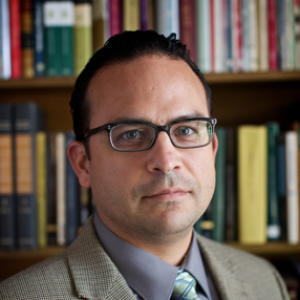
The social justice issue that I have consistently raised in my biblical exegesis courses has been US immigration. As I tell my students—mostly white middle-class Protestants fixed on parish ministry—engaging this topic in a sermon will likely incite some criticism from parishioners or even set in motion a premature resignation. Despite my school’s borderlands location and the exilic content of the Hebrew Bible, pivoting to the topic of US immigration in a biblical exegesis course cannot be done haphazardly. In terms of texts, I find that Genesis (12–50), Exodus, Psalms 120–134, Second Isaiah (40–55) and Lamentations are especially apt for engaging this complex sociopolitical topic. What is unavoidable in these texts are stories about people on the move because of famine, jealousy, conquest, or faith—to name just a few. Yet still, connecting these biblical stories to the lived experiences of migrants in places like the US-Mexico border is by no means a linear process. No matter how convinced I am that Abram’s journey from the Ur of the Chaldeans to the land of Canaan (Gen 11:31) is a migration story, in order to bring my students along I must confront the assumptions that inform their understanding of migration. A common assumption they often have about migration and by extension immigration is that both phenomena represent a social problem or challenge. At the source of this assumption is indeed not an ancient notion of migration but rather their nation-state formation. By contextualizing the latter, students discover that the problems most associated with migration and immigration in US dominant society—like border crossers as “illegal,” economic strains, cultural threats, and spreaders of disease—stem from Western nationalist forms of inclusion and exclusion. After discovering their own nation-state biases about immigrants, I find it easier to shift to the theme of migration in the biblical text, contrasting along the way the ancient assumptions that likely informed it. As opposed to nationalist thinking, the biblical text often starts with the assumption that humans are free to move and that this movement constitutes an act of faith rather than a crime. Emphasizing the freedom of movement and the faith that accompanies it in the biblical text, I then pivot to US immigration and the sociopolitical injustices produced by the nation-state’s control of human mobility. Though migration studies, forced migration studies, and refugee studies are useful resources, their approach to immigration is often based entirely on the modern concept of the nation-state and hence tend to view borders, citizenship, and state sovereignty not as human constructs but as natural to our earthly existence. This nationalist-centric agenda can also be transferred unwittingly over to the biblical commentary material that relies on the social sciences. For this reason, I supplement my immigration bibliography with migrant artwork (See https://artedelagrimas.org/), particularly the kind that emphasizes the freedom of movement and faith as in the drawing below: Dayana, “Mi Jornada (My Journey),” colored pencil and marker, 2014, 9 x 12, Arte de Lágrimas Gallery. Dayana is from Guatemala and was 7-years old when she drew this art piece about her asylum-seeking journey to the US. She and her mother travelled by car and then by bus. She remembered that the road was long and gray (left side). Her picture narrative ends with them crossing the Rio Grande on a makeshift raft (lancha). She first drew the rocks (piedras) in the river and then the river banks. Next, she drew the makeshift raft in the middle of the river with her and her mother inside it. I asked, “Did anyone say good bye to you?” She replied, “My aunt.” She placed her aunt on the Mexican side of the river waving goodbye. I then asked, “Was there anyone else?” Not saying anything, she removed the rosary from around her neck and traced the plastic crucifix over the Rio Grande. She then began to sing the hymn “En la Cruz, en la Cruz, yo primero vi la luz, y las manchas de mi alma yo lavé, fue allí por fe yo vi a Jesús, y siempre feliz con El seré (At the Cross).” Her and her mother sang these words while on the raft. In the drawing the cross is the symbol of faith that accompanied Dayana’s migratory movement across the Rio Grande—the symbol of a territorially bounded state. Like Abram’s story, her faith assumes the freedom of movement.